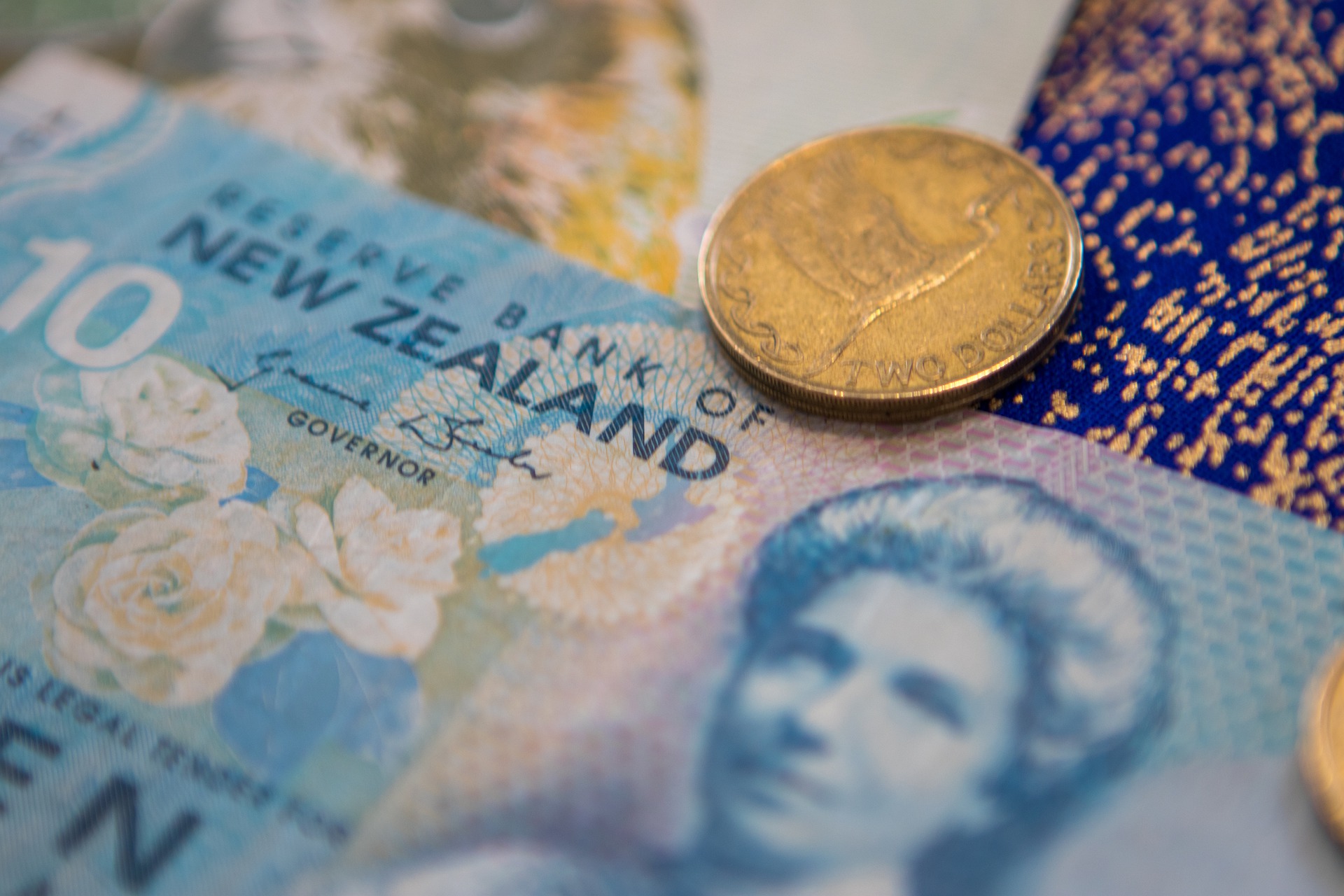The NZD/USD is at a two-month high as unemployment numbers decline from 4.9% to 4.7% and commodity prices surge amid increased export to China.

NZD/USD Moves Higher to Two-Month High
The NZD/USD has been one of the strongest performing currencies currently, as it closed at a two-month high at 0.7300 for the weekend ended May 7, 2021.
The NZD/USD touched a multi-year high of 0.7466 in February 2021. Though it slid to 0.6950 on March 26, 2020, during the pandemic, it has bounced higher to close at a two-month high of 0.7272 on May 7, 2021. The economy is improving with border restrictions removed and employment opportunities increasing. The US dollar has moved lower, and this has helped the New Zealand dollar gain strength.
China’s trade performance is high in April, with exports increasing by 32.3% year-on-year. Import has increased to a 10-year high, with an increase of 43% from last year. The surge in commodity prices has helped the New Zealand dollar move higher against the US dollar.
The 200-day SMA is at 0.6947, while the 100-SMA is at 0.7162.
NZD/USD Surges as Labor Market Improves
Unemployment has improved with fiscal support helping businesses.
New Zealand was affected by border restrictions. However, with Covid conditions improving, the country expects better economic recovery once other countries open up their economies. Fiscal stimulus has helped the country get through the Covid lockdown.
The labor market has moved positively, with the unemployment rate dropping to 4.7% for the quarter ending March 2021. It was 4.9% for the quarter ending December 2020. In September 2020, it was 5.2%. The New Zealand dollar improved almost by a quarter of a cent on the positive data received from the labor market. Employment levels have improved from the pre-pandemic levels.
Employment numbers have shown improvement this quarter, with more people employed than the previous quarter. However, reports state that part-time employment has increased more than full-time employment. The total number of working hours has dropped 2.3% in March. In particular, the number of women employed in part-time work has improved.
The Labor Cost Index (LCI) has gone up 1.6% for the quarter ending March 2021, with wage growth remaining the same.
Fiscal Stimulus Supports NZD/USD
The housing market has gone up with mortgage lending increasing. The RBNZ has tightened its loan-to-value ratio requirements. (LVR). The bank has adopted measures to restrict mortgage lending by increasing the percentage value on the property value to 80% for new loans.
Border restrictions have kept the education and tourism sector under stress. Domestic and international travel restrictions have reduced the arrival of tourists and students into the country.
Measures taken to provide government support have helped the financial system. Non-performing loans are lower than that of the financial crisis of 2008. Business activity is expected to rise once the economic outlook improves. Business confidence will improve the economy and provide more employment. Supply chain issues, lockdown, and border restrictions affect businesses.
Retail credit card spending has increased 0.9% in March 2021 from the previous month’s decline of 2.5%. Year-on-year credit card spending has increased by 5.1%.
The Trade surplus has surged with imports declining. Imports have decreased with the Covid-19 pandemic and border restrictions. Fuel, cars, and turbojet imports have reduced. Exports have increased in dairy and fruit. Once the supply chain improves, the export of agricultural products is expected to improve. The export-dependent economy has been affected by shipping delays, transport disruptions, and the shortage of containers. Export to China is improving, which will benefit the New Zealand economy, as it is the single biggest market for goods from New Zealand.
RBNZ Hints on Negative Rates
New Zealand has kept key interest rates at 0.25%. Low-interest rates have supported investment and spending and kept asset prices higher. Fiscal stimulus has helped the country get through the Covid lockdown. RBNZ has hinted that negative interest rates may be considered, as the economy needs more monetary and fiscal support.
Quantitative Easing has helped to bring down borrowing costs. General Orr has said that the RBNZ is prepared to bring in measures to pull up the economy and to keep the bond yield curve lower.
Other Major Currencies
The US Dollar index saw a sharp decline on Friday and is trading below the psychological support at 90.50 levels. The US dollar index is at the February 2021 lows at 90.21, moving to a three-month low. Nonfarm Payroll data have been disappointing, and the Unemployment Rate has moved higher to 6.1%.
The US bond yield has moved lower than 1.50% levels. However, there is a massive rally on Wall Street, with stock markets moving to new highs. The vaccine roll-out and the reopening of the economy have helped the economy gain strength.
AUD/NZD is moving within a close range between 1.0700 and 1.0800 in April and May. Trade relations between Australia and China are affecting the Australian economy. It has indirectly helped to strengthen the New Zealand dollar.
The NZD/JPY has been surging higher. The New Zealand dollar against the Japanese yen has moved higher from 73.50 levels in January 2021 to 79.00 levels in May 2021. The NZD/JPY currency pair is almost towards the multi-year high at 79.22 reached on February 2021.